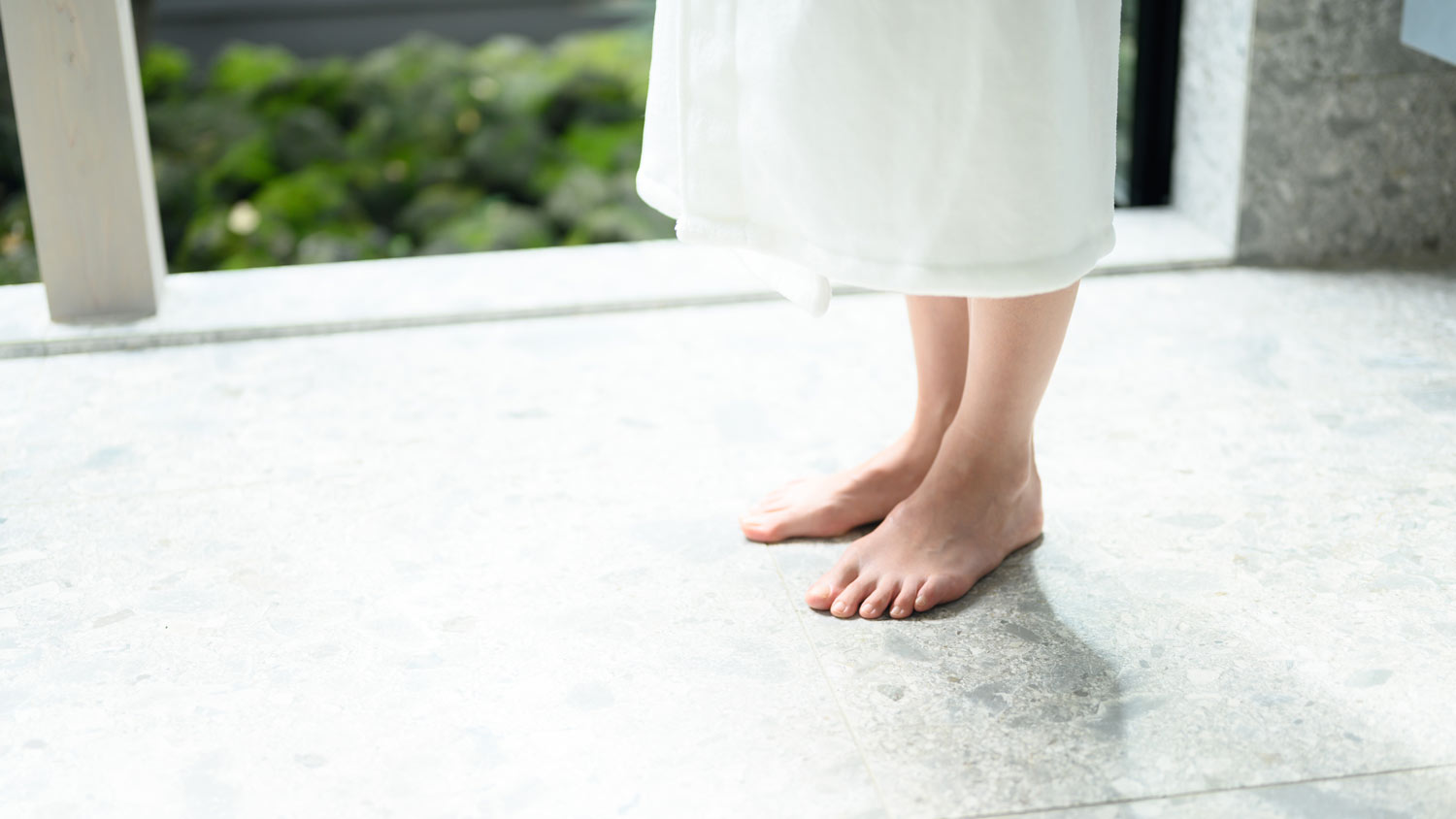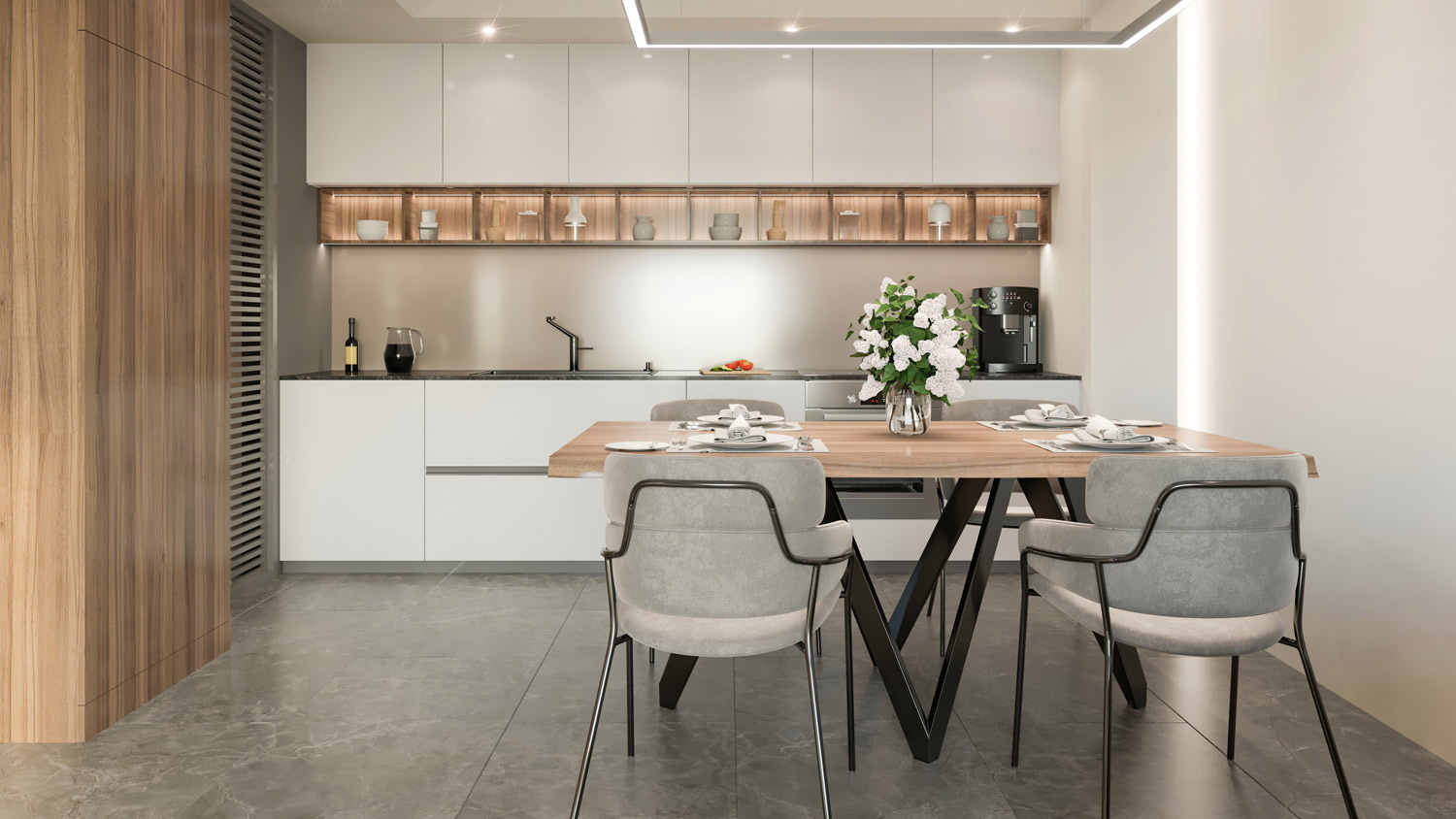
Updated flooring can make any room in your home feel brand new. Explore flooring installation costs in St. Louis, MO, from materials to labor costs.
The average cost to install a heated bathroom floor is $1,800, with most homeowners spending between $600 and $4,600. Your price depends on the bathroom size, system type, labor, and any additional features.


Heated bathroom floors cost between $500 and $8,000, with most homeowners paying an average of $1,800.
The main cost factors include the system type (electric or hydronic), bathroom size, and additional features such as programmable thermostats.
Properly installed heated floors can boost home value and attract buyers looking for luxury and efficiency.
These systems offer low maintenance and can help reduce moisture, making your bathroom a safer space.
Expect to pay $8 to $20 per square foot for installation, depending on your choices and local rates.
This article was created using automation technology and thoroughly fact-checked and edited by an Angi Editor in accordance with our AI policy.
Heated bathroom floor costs average $1,800, with prices ranging from $600 to $4,600 for most homeowners. Expect to pay $8 to $20 per square foot, depending on the system type, bathroom size, and installation complexity. Upgrading to a heated floor can add comfort and value to your home.
Let’s take a closer look at what affects the cost of heated bathroom floors and how you can make the best choices for your bathroom and budget.
The size of your bathroom is one of the biggest factors in the cost of a heated bathroom floor. The larger the area you want to heat, the higher your total installation cost will be. Small powder rooms cost much less than master bathrooms, both in materials and labor. Heated floors are priced by the square foot, so accurately measuring your space is key for budgeting.
Oddly shaped or irregular bathrooms may require custom heating layouts, which can increase the installation cost. If you plan to heat multiple bathrooms or a large space, some installers offer volume discounts, but the overall cost will still rise with size.
| Bathroom Size (Sq. Ft.) | Description | Average Cost | Cost Range |
|---|---|---|---|
| 20 | Small powder room | $200 | $150–$500 |
| 40 | Standard guest bath | $500 | $400–$1,000 |
| 60 | Master bath (small) | $1,200 | $700–$1,800 |
| 100 | Large master bath | $2,000 | $1,200–$3,000 |
| 150 | Multiple/large project | $3,000 | $2,000–$4,000 |
Choosing the type of heated bathroom floor system has a big impact on cost, installation, and comfort. The two main types are electric radiant and hydronic (water-based) systems.
Electric radiant systems use heating cables or mats installed beneath the floor. They are popular for bathrooms due to their relatively easy installation and lower upfront cost. Hydronic systems circulate hot water through tubing and are more complex, often reserved for new builds or major remodels. They cost more to install but may be more efficient for large spaces.
Electric systems are easier to retrofit in existing bathrooms, while hydronic systems are better suited for new construction. Your choice will shape both your budget and installation timeline.
| System Type | Description | Average Cost per Sq. Ft. | Total Installed Cost | Pros | Cons |
|---|---|---|---|---|---|
| Electric wire | Cables woven in a custom layout | $10 | $900–$3,000 | Easier retrofit, quick heat-up | Higher operating cost, less efficient |
| Electric mat | Pre-formed mesh mats | $12 | $1,000–$3,200 | Simple install, uniform heating | Not ideal for odd shapes |
| Hydronic | Hot water tubes under the floor | $15 | $2,000–$5,000 | More efficient for large areas | Complex install, higher labor |
Programmable thermostats and smart controls allow precise temperature scheduling and can cost $100 to $300 extra, but they help save on energy. Zoning—separating different areas for independent heating—adds flexibility but raises the price, especially for multi-room projects.
Adding insulation costs $1 to $3 per square foot but boosts energy efficiency, reducing long-term costs. Floor covering matters, too: tile and stone are ideal for radiant heat, while some vinyl or engineered wood options work if approved by the manufacturer. Installation costs may rise if your chosen flooring needs special prep or care.
Where you live plays a key role in determining the cost of a heated bathroom floor. Regional labor rates, material prices, and the local cost of living all affect your final bill. Urban areas often have higher labor costs, while rural locations may see lower rates but fewer available installers.
Bathrooms on upper floors or in hard-to-reach areas may cost more to outfit with heated floors due to extra labor for moving materials and accessing subfloors. Master baths, which are larger and more customized, tend to cost more than guest baths. If your bathroom is part of a larger remodel, access and setup may be easier, potentially lowering some labor costs.
Several factors influence the total cost of installing a heated bathroom floor. Let’s break down what you need to consider.
Professional installation involves flooring contractors and, for hydronic systems, licensed plumbers and electricians. Electric systems often require less labor, with rates from $5 to $10 per square foot, while hydronic systems can cost $8 to $15 per square foot for labor alone.
Hourly rates for local flooring installers vary by region, ranging from $50 to $120 per hour. Labor includes removing old flooring, prepping the subfloor, installing the heating system, electrical connections, and finishing the new floor.
Most municipalities require permits for heated floor installations, especially if electrical or plumbing work is involved. Permit fees range from $50 to $250, depending on your location and the complexity of the project. Inspections may be necessary for code compliance, and skipping permits can result in fines or issues when selling your home.
Upgrades like programmable thermostats, Wi-Fi controls, or integration with smart home systems can increase your project cost by $100 to $500. Custom heating zones, which let you control different areas independently, also add to the budget but give you more comfort and efficiency.
Other cost drivers for a heated bathroom floor include:
Project complexity (irregular layouts, obstacles, or multi-room setups)
Accessibility and ease of reaching the subfloor
Site prep, such as demolition and debris removal
Delivery of materials and equipment
Post-construction cleaning
Design or consultation fees for custom projects
Inspection costs for code compliance
Each of these can add to your final bill, so it’s wise to ask for an itemized estimate.
The cost of a heated bathroom floor doesn’t end at installation. Here are a few more expenses to keep in mind.
Many manufacturers offer warranties for heating elements and thermostats, lasting five to 25 years. Installers may also provide labor warranties for one to five years. Extended warranty options are available for an additional $50 to $200. Always check what is covered and for how long, as comprehensive warranties can add peace of mind and value.
Monthly energy costs for heated bathroom floors are modest, often $10 to $30 per month, depending on system size, usage, and local utility rates. Hydronic systems tend to be more energy efficient, especially in large spaces. Using programmable thermostats and insulation underlayment can help keep operating costs low.
Routine maintenance for electric systems is minimal, mainly involving periodic thermostat checks and keeping the floor clean. Hydronic systems may require occasional inspections or servicing, which can cost between $100 and $300 every few years. Most heated floors last 15 to 30 years with proper care.
Some homeowners consider tackling heated bathroom floor installation themselves to save on labor costs. DIY materials for a small to medium bathroom cost $500 to $1,200, plus $100 to $300 for tools and permits. By installing it yourself, you can save $700 to $2,000 in labor costs.
However, DIY installation requires electrical knowledge, careful floor prep, and attention to detail for safety and performance. It takes a skilled DIYer one to three days to complete, but mistakes can lead to costly repairs or void the warranty.
Professional installers bring expertise, ensure code compliance, and include warranties for their work. For most homeowners, especially with electric or hydronic systems, hiring a pro is the best way to protect your investment and ensure a safe, reliable result.
If your heated bathroom floor stops working, you’ll need to weigh the options of repair versus replacement. Common repairs include fixing damaged heating mats, replacing faulty thermostats, or repairing wiring, with costs from $150 to $600, depending on the issue. Complete flooring replacement costs range from $900 to $3,600.
If the system is old, out of warranty, or repairs approach 50% of the replacement cost, it’s smarter to replace the entire system. Replacement may also be necessary if the floor covering is damaged or if repeated repairs have failed. Consider the age of your system, the extent of the damage, and how long you plan to stay in your home when making your decision.
Installing a heated bathroom floor can boost your home’s value and appeal. Many real estate experts estimate a return on investment of 50% or more for this upgrade, especially in high-end or cold-climate markets. Buyers appreciate the comfort and efficiency, often seeing it as a luxury feature.
Compared to other bathroom upgrades, heated floors offer strong value, as they improve comfort, energy efficiency, and even safety by helping floors dry faster and reducing slip risk. A heated bathroom floor can make daily routines more enjoyable and add a modern, luxurious touch to your home.
To keep your bathroom floor installation cost-effective, consider the following tips:
Choose the right system type for your needs and budget
Install during a larger bathroom remodel to save on labor
Get multiple quotes from qualified installers
Opt for programmable thermostats to save on energy costs
Consider partial installation (e.g., only in high-traffic areas)
Use energy-efficient insulation to reduce operating costs
Purchase materials during sales or off-season
Prepare the site yourself (e.g., remove old flooring) if possible
Home is the most important place on earth, which is why Angi has helped more than 150 million homeowners transform their houses into homes they adore. To help homeowners with their next project, Angi provides readers with the most accurate cost data and upholds strict editorial standards. We extensively research project costs to develop the pricing data you see, so you can make the best decisions for you and your home. We rely on reputable sources, including the U.S. Bureau of Labor Statistics, academic journals, market studies, and interviews with industry experts—all to ensure our prices reflect real-world projects.
Want to help us improve our cost data? Send us a recent project quote to [email protected]. Quotes and personal information will not be shared publicly.
From average costs to expert advice, get all the answers you need to get your job done.

Updated flooring can make any room in your home feel brand new. Explore flooring installation costs in St. Louis, MO, from materials to labor costs.

Discover natural stone flooring costs for your home. Learn about material, labor, and installation factors to budget confidently for your flooring project.

The cost to install Pergo® flooring depends on the type of flooring you choose. This brand is known for its laminate but has other things to offer.

Updated flooring can make any room in your home feel brand new. Explore flooring installation costs in Columbus, OH, from materials to labor costs.

Decorative baseboards add sophistication, but they’re often expensive. These are the best baseboard alternatives for a high-end look without the high-end price!

Learning how to install transition strips in doorways makes the transition between rooms smoother and protects the edges of the flooring.